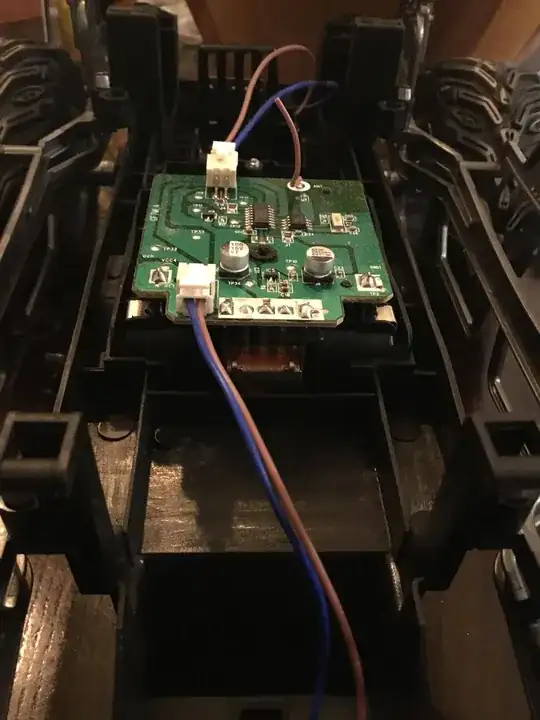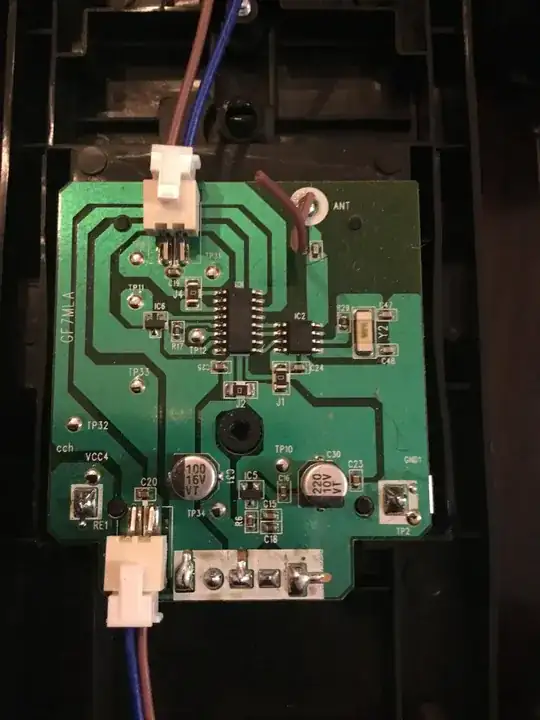I’m a total newb with electronics but know my way around Linux/Python just fine. I’ve read many tutorials but none of them cover using gpio to control a RC car control board and I’m wondering what I need to make this work considering it’s a 6.4v battery connected directly through the board.Thanks for your advice in advance.
- 13
- 2
2 Answers
The RPi needs a 5 volt power source with 2.5 amps of "capacity". There's a reasonably thorough explanation of the RPi's power requirements and options in this blog. You should read this. You may also wish to read this answer. Reading these will give you some general information and ideas, regardless of your background with electronics.
With respect to power for your RPi, I'll assume that "mains power" isn't a practical option, and that you've determined the RPi must be powered from a "portable" source - a battery in other words.
As you will not be able to power the RPi directly from your 6.4 volt battery, you have two (2) battery power options: 1) add a "voltage regulator" that will produce 5 volts dc from the 6.4 volt battery, 2) add a second 5 volt battery dedicated to your RPi.
The simple and likely trouble-free option would be to obtain a 5 volt battery dedicated to your RPi. If you have the space, and weight budgets, you should consider this as a "place to start". You can find such batteries at several shops; here's one that may suit your needs.
To add a 5 volt dc regulated output to your existing battery, seriously consider a "series pass" regulator. They are simple (at least externally) to use and inexpensive. If you take this route, you have another decision to make as there are two approaches: 1) DIY, or 2) BUY. If you want to go the DIY route, look at this linear regulator from TI. If you want to go the BUY route, here's a switching power supply that is certainly inexpensive, and it might work.
Finally, if you take the "single 6.4 vdc battery" route, keep this in mind: The RPi is sensitive to power fluctuations. Power fluctuations can cause some really odd behavior that might not be easily recognizable as such. To give yourself the best chance, consider decoupling the RPi power source. I've included a generic schematic below to illustrate "decoupling".

simulate this circuit – Schematic created using CircuitLab
- 18,728
- 2
- 27
- 57
-
1Thank You Seamus! I really appreciate the detailed answer and trouble you went through with explaining the various options. – Joel Johnston May 26 '18 at 17:48
-
1Glad to do it. Let us know how this works out, or if you have follow-up questions. – Seamus May 26 '18 at 17:58
I would use a LM2596 DC-to-DC buck converter (available on Amazon) adjusted to provide 5.2V to the Raspberry Pi from your 6.4V battery. For simple on/off control, you would need a relay that you can control from GPIO. My favorite relay is AdaFruit FeatherWing Non-Latching Relay. Just connect the Pi3V3, GND, GPIO pin to the FeatherWing and you can switch stuff on and off. If you need more than one on/off relay, consider the Pimoroni Automation Hat.
- 1,119
- 5
- 8
